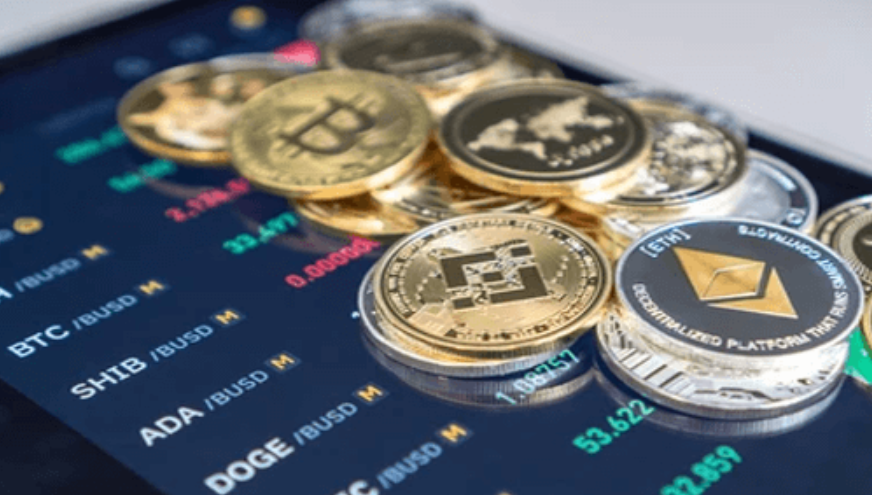Getting a piece of the token upside
Some DeFi protocols are able to generate millions per day in fees. Whenever I’m analyzing an investment, I’m asking myself, “Are they sharing a piece of that with us?”
That’s value accrual.
Today I’ll be Covering:
• Value Accrual. How are protocols spreading their wealth?
• More Bear Market Tips. My favorites from 1300+ comments.
Let’s dive in!
DeFi Lesson: Value Accrual Mechanisms
One of the most important things I’m looking for when analyzing a project is:
”How does the token accrual value?”
|
|
I like to think about protocols as companies. As the protocol (company) grows, it starts creating value. How does that value get passed along financially to you as a shareholder?
Some earlier projects didn’t have intricate tokenomic designs – the value simply went up when other people buy. That’s what happened with Dogecoin last year. The price skyrocketed because of Elon’s hype and people were speculating on the price going up.
Now we’re almost two years into DeFi. Some protocols are earning millions of dollars a day in fees. You want to see which protocols are sharing some of those sweet rewards with you.
Why is this important? It aligns investors with the long term success of the project. Investors aren’t loyal. New projects are launching on a daily basis.
Having value accrual mechanisms incentivizes to stay invested in the project.
Various Value Accrual Mechanisms
1) Protocol Revenue Share / Fee Accrual.
Protocols earn revenue in different ways. Here are a few common ones:
a) Swap fees.
b) Liquidation fees.
c) Treasury yield.
d) GameFi’s it’s own beast. There are different fees for certain actions in the game.
The most common model is to stake the native token, and then you earn a percentage of the protocol revenue.
Example: You stake your Token for xToken. You and the rest of the stakers earn 30% of all protocol revenue. You get paid out with more of the native token usually.
One problem is when you’re staking and you’re earning the native token. Most tokens are inflationary, and the price tends to go down overtime.
An alternative model we’re starting to see if when protocols pay out in non-native tokens.
Examples:
• Trader Joe (The leading DEX on AVAX). Staking sJoe earns a % of protocol revenue. Rather than paying you with $Joe, they pay you with stablecoins.
• GMX (Decentralized Perpetual Exchange). Staking GMX means that 30% of fees generated from swaps and leverage trading are converted to ETH / AVAX and distributed to staked GMX tokens. You get paid in ETH and AVAX!
2) Supply Burn. The less supply there is of a token, then the more valuable the token becomes in theory. Protocols can use excess revenue / profits to buy back tokens from the open market, and burn them.
3) Governance / Voting. It’s kind of a meme that Governance tokens are worthless. Why? Because no matter what you vote for, some whale with $10m worth of tokens can come in and slap everyone around.
The most valuable type of governance tokens right now involve directing emissions and liquidity.
Think Curve tokens and everyone else using that playbook (Beets, Spirit Swap, Playtypus, etc.)
4) Bribes. Some voting is so important that 3rd party protocols will bribe you to vote for them.
5) Rewards. Holding a token can earn you rewards. In DeFiKingdoms, they airdrop rewards depending on how many tokens you’re staking.
In Cosmos, staking ATOM will earn you multiple types of rewards.
|
|
Questions to Ask:
• How does the protocol share the value / rewards with token holders?
• How does the protocol incentivize long term holding?
• How are they trying to decrease the sell pressure?
By the way, value accrual is only one part of understanding Tokenomics. If you want to dive deeper, I wrote a thread last month on the subject.
You’re going to get wrecked if you don’t understand Tokenomics.
But what IS Tokenomics and what should you watch out for?
Here’s everything you need to know about Tokenomics:
(+ a free Tokenomics checklist)
— The DeFi Edge 🗡️ (@thedefiedge) April 6, 2022
One final warning: make sure you 100% understand everything you’re invested in. The tokenomic models will only become more complex overtime.
Until there’s more real world usage, it does feel like many tokenomic models revolve creative ways of putting handcuffs on you.
20 Tips to Survive the Crypto Bear Market:
— The DeFi Edge 🗡️ (@thedefiedge) May 24, 2022
I asked OGs what advice they have to survive a crypto bear market. There were 1300+ comments and I curated some of my favorites.
The Market Can Still Go Lower. Don’t be in a rush to buy the dip. Personally, I hate trying to time the market. No one can and it adds unnecessary stress to my life. I automatically buy ETH on the 1st of every month.
Most Coins Won’t Hit ATHs again. Some projects will go to $0. Might be better to salvage that last 20% remaining.
Some Coins Might Break ATHs. I bought BNB and Vechain in 2017. They went down by around 90% and I literally forgot about them for a few years. Well, Vechain ended up 20x’ing and BNB ended up pivoting to the Binance Smart Chain and going insane. These more than made up for all my other coins that went to $0.
These two pieces of advice may contradict each other. It depends on which projects you feel have enough fundamental value and runway to make it through a bear market.
Live Life. Bull markets take a toll on your. Your mental and physical health go to shit. You neglect a lot of relationships. This can be a great time to strengthen those areas.
Learn / Build. Master the fundamentals. Learn some skills. Have you always wanted to work in Web 3? Now’s a great time to transition. Check out my Job Board. I’ll be spending the bear market building out The DeFi Edge into something bigger.
Everyone thinks “building” is for developers. No. A builder is anyone that helps push Crypto forward. Don’t just sit around waiting the next few years.
Contribute whatever way you can.
Don’t Leave the Market. My #1 biggest mistake is that I’d lose interest in Crypto once it became a bear market. I’d come back once things start pumping again. By then I’d miss most of the gains!
So you should stick around and learn. If you come back when the bull cycle happens again, you’ll be spending all your time playing “catch up.”




